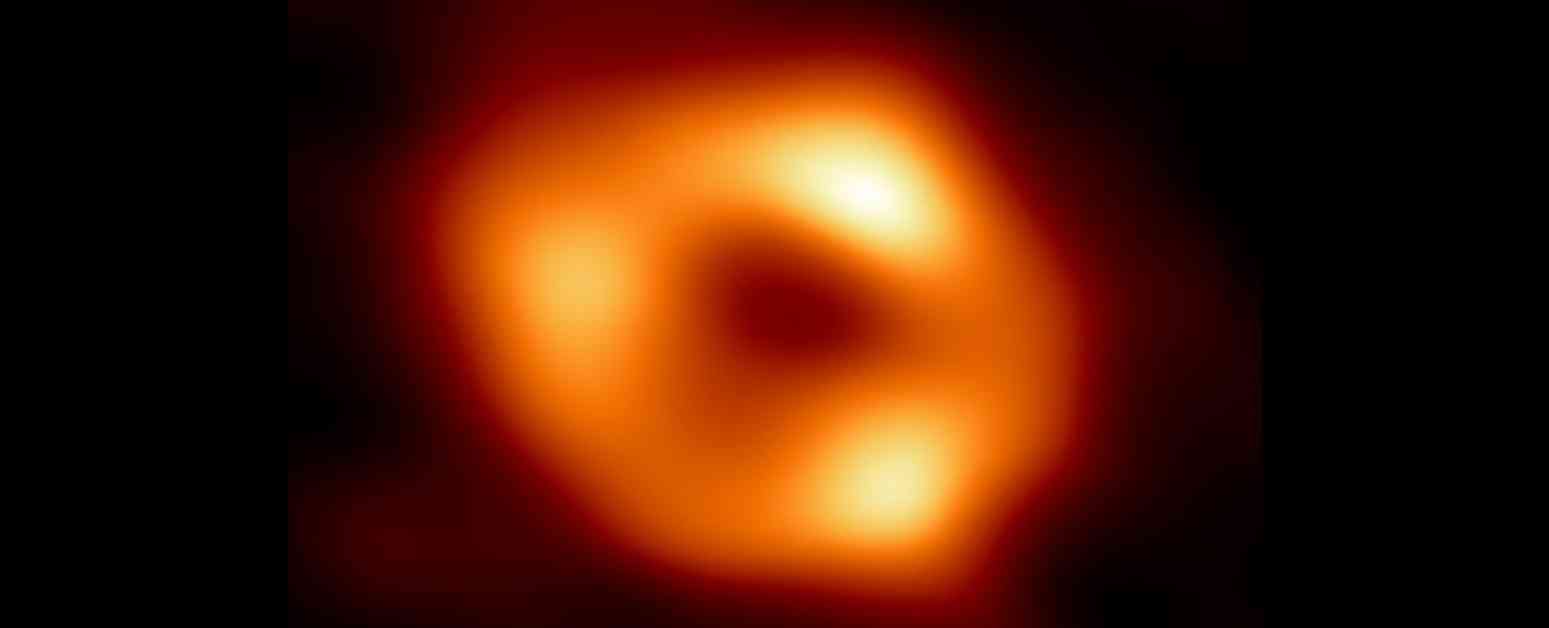Formation of Supermassive Black Hole Sgr A* Through Collision 9 Billion Years Ago
The first image of Sgr A*, the supermassive black hole at the center of our galaxy, has been captured by the Event Horizon Telescope (EHT). This milestone provides a glimpse into the mysteries of these enigmatic objects that lurk at the hearts of large galaxies like ours. Supermassive Black Holes (SMBHs) are so massive that they defy comprehension, with some containing billions of times more mass than the Sun. In comparison, our own SMBH, Sgr A*, is relatively modest at about four million solar masses.
Astrophysicists have delved into the study of Sgr A* to unravel its secrets, including its age. Through their research, they have determined that this colossal black hole formed approximately nine billion years ago. SMBHs are captivating due to their immense gravitational pull, which can even trap light. They are surrounded by swirling disks of material known as accretion disks, which feed matter into the black hole. When actively feeding, SMBHs are referred to as active galactic nuclei (AGN), with the most luminous AGNs earning the title of quasars, capable of outshining entire galaxies.
Determining the age of these cosmic behemoths is no easy task. Scientists rely on gathering data, piecing it together, and running simulations to unravel the mysteries of these celestial giants. The groundbreaking observations by the Event Horizon Telescope in 2017, capturing the black hole at the center of galaxy M87, marked a significant leap in our understanding of these cosmic phenomena. This was followed by the EHT’s observation of Sgr A* in 2022, providing crucial insights into our galaxy’s central SMBH.
Recent research published in Nature Astronomy sheds light on the age and origin of Sgr A*, titled “Evidence of a past merger of the Galactic Centre black hole.” The study, authored by Yihan Wang and Bing Zhang, astrophysicists at the University of Nevada, Las Vegas, used EHT observations to unravel the mysteries surrounding Sgr A*. The research points towards a past merger event as the likely mechanism behind the formation of Sgr A*, shedding new light on the dynamic history of our galaxy.
Black holes grow through two primary processes: accretion of matter over time and mergers with other black holes. The prevailing belief among astrophysicists is that SMBHs form through galaxy mergers, and Sgr A* is no exception. The researchers suggest that the formation of Sgr A* likely involved a merger event, in addition to ongoing accretion of material. This unique black hole is characterized by its rapid spin and misalignment relative to the Milky Way, providing tantalizing clues about its turbulent past.
According to Wang and Zhang’s findings, Sgr A* may have undergone a merger with a long-lost satellite galaxy known as Gaia-Enceladus. The researchers utilized computer simulations to model the potential impact of a merger on the Milky Way’s central black hole. Their investigations revealed that a 4:1 mass ratio merger with a highly inclined orbital configuration could explain the observed spin properties of Sgr A*. This merger event is estimated to have occurred around nine billion years ago, following the Milky Way’s merger with Gaia-Enceladus.
The implications of this discovery extend beyond our galaxy, providing valuable insights into the formation and evolution of supermassive black holes. The misaligned high spin of Sgr A* hints at a dramatic merger event that altered the black hole’s properties, offering a glimpse into the dynamic processes shaping these cosmic entities. The researchers’ work supports the theory of hierarchical black hole mergers, providing observational backing for theoretical predictions in the field.
While gravitational wave observatories have detected an increasing number of black hole mergers, they have primarily focused on stellar-mass black holes. The lower gravitational wave frequencies produced by SMBH mergers remain beyond the detection range of current observatories like LIGO/Virgo/KAGRA. However, with plans underway to develop facilities capable of detecting these lower frequencies, such as the upcoming LISA mission by ESA and NASA, the prospects for observing SMBH mergers are promising.
SMBHs stand as some of the most perplexing objects in the Universe, challenging scientists to unravel their mysteries. The research on Sgr A* offers a glimpse into the dynamic processes that shape these cosmic giants, paving the way for deeper insights into their formation and evolution. As our understanding of SMBHs continues to grow, so too does our appreciation for the intricate dance of cosmic forces that govern these enigmatic entities.













